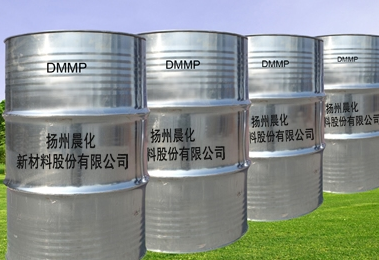Some additive flame retardants commonly used in some materials may decompose a little under the processing temperature, which limits the use of some flame retardants on the one hand, and on the other hand limits the processing temperature used in flame retardant materials. A lot of additive flame retardants are filler type, but in order to make the materials reach the required flame retardant level, the amount of additive is often large, so it is difficult to disperse them uniformly in the polymer matrix, which may reduce some properties of the materials.

Although the co effect system composed of halogen flame retardant and antimony oxide can give the material a high oxygen index and UL94 flame-retardant level, and can meet the use range of many places with strict fire requirements, the system has a large amount of smoke during pyrolysis and combustion, and produces toxic and corrosive gases. However, when the amount of solid flame retardants is very high, it is difficult for them to disperse uniformly in the melt polymer. The poor dispersion will aggravate the brittleness of the polymer and reduce the flame retardant effect. The dispersion of flame retardant in materials can be improved by making the flame retardant into masterbatch (the processing cost is too high) or surface treatment with coupling agent (currently widely used).
Another problem of flame retardant is that it will reduce the light resistance of materials, and the effect of light stabilizer hindered amine is that halogen flame retardant is seriously deteriorated. Inorganic flame retardants are slightly better than halogen flame retardants in this respect. For example, zinc oxide can greatly reduce the thermal aging time of such additives.
Generally speaking, the price of flame retardant materials is higher than that of non flame retardant materials, and the recycling of flame retardant materials is more difficult than that of non flame retardant materials. Although the use of flame-retardant materials needs to pay a cost, but weighing the flame-retardant products in today's society, improving fire safety, reducing the loss of people's lives and property in the fire and outstanding contributions to environmental protection, flame-retardant is still our necessary and wise choice.
In the process of flame-retardant, most manufacturers adopt the sequence of loading wood → adding flame retardant → adding water → starting flame-retardant. Generally speaking, when the water absorption of wood is large at the beginning, the flame-retardant solution with very low concentration is often absorbed by wood by this process. In the process of wood flame-retardant, a process is needed to make the concentration of flame-retardant solution absorbed by wood excessive from low concentration to normal concentration, which directly affects the dry salt absorption and absorption rate of wood, and then affects the flame-retardant effect. In the order of adding flame retardant → adding water → loading wood → starting flame retardant, what wood absorbs at the beginning is the standard concentration of flame retardant liquid, thus avoiding the process of excessive absorption of flame retardant liquid from low concentration to normal concentration, and improving the flame retardant quality. If the enterprise has the conditions, it can first prepare the flame retardant into the specified concentration of flame retardant liquid and then add it into the flame retardant pool, the flame retardant quality will be better.